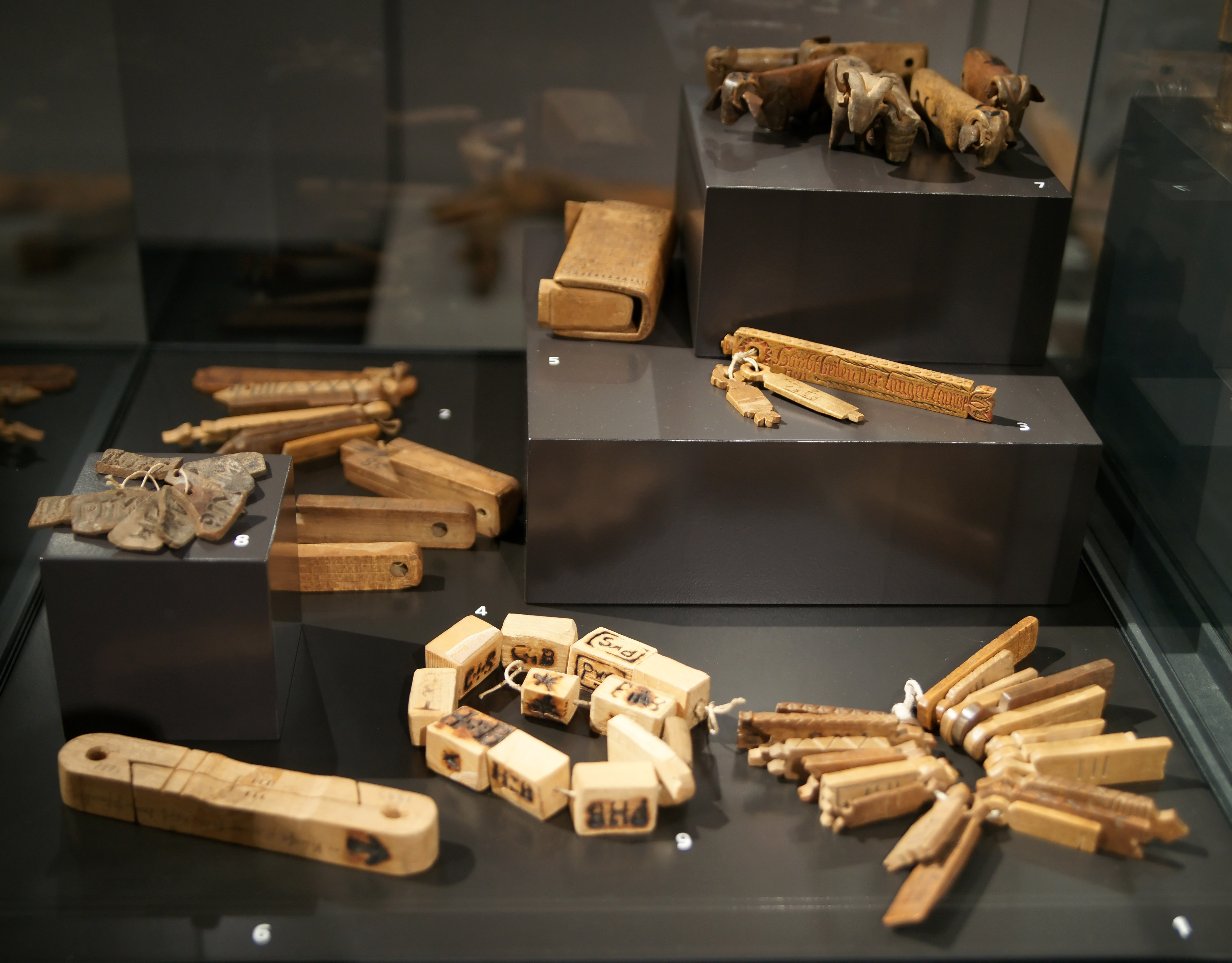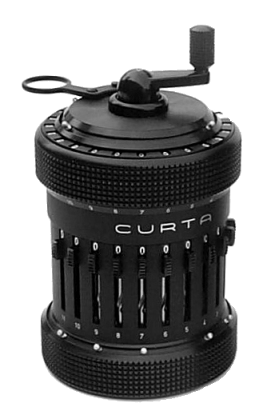 BC 30000: Tally Bones ~ Ancient Man would use the bones of its prey (baboon (Africa) or wolf (Czech)) to carry with them and make tally marks, or, as some suggest, make calculations. A departure of early man from what would be considered sentient 'others' is symbology of conceptional ideas. In this form, early peoples would have a medium of record, portability, and malleability. As we can speculate, this mathematical artifact is more than a crude tool - it had to have been used as a center of discussion, debate, forethought. It was, in effect, an extension of thought: not toward an outcome or to change a state of another object. It was conceptual, where ideas could grow.
BC 30000: Tally Bones ~ Ancient Man would use the bones of its prey (baboon (Africa) or wolf (Czech)) to carry with them and make tally marks, or, as some suggest, make calculations. A departure of early man from what would be considered sentient 'others' is symbology of conceptional ideas. In this form, early peoples would have a medium of record, portability, and malleability. As we can speculate, this mathematical artifact is more than a crude tool - it had to have been used as a center of discussion, debate, forethought. It was, in effect, an extension of thought: not toward an outcome or to change a state of another object. It was conceptual, where ideas could grow.BC 1800: Cuneiform Script Tablets ~ a well known example is the Plimpton 322 tablet, created from a contemporary of the biblical Abraham. There are very few extant works in clay, as you can imagine their permeability does not lend itself as other materials for permanence...but for the Plimpton tablet, we see a Babylonian society keeping a table of Pythagorean triples. 'Why' is not the question here, since, as with logarithms, the purpose is to hold numbers not easily memorized otherwise. For example, in the fourth column, they have listed numbers for the width of an object at 12709, it's depth at 18541 and its diagonal squared at 3437686681. Tablets were malleable, reproducible. The thriving mercantile of commerce centers lived off of them. They were a formal introduction to math as receipt, as reference, as trust.
1200 AD: Suan-Pan, Abacus ~ outside of reference, how would one make calculations outside of proofs? Meaning, how can the common merchant make calculations on the fly? You construct a device that symbolizes values in readily desired amounts: single units, then in factors of five. Tens, hundreds, thousands, etc. can be derived quickly. It was indeed portable. It was a technology. It also allowed for shared experience, since both the merchant and the purchaser could see the calculation's value on its display. The leap in technology was apparent - it allowed humans to make dozens of calculations a minute if needed.
1614 AD: Logarithms ~ made famous by John Napier in his A Description of the Marvelous Rule of Logarithms. The theme here is making difficult calculations easier, especially those that take time to do by hand. They also can help measure against a base-10 construct, like the Richter scale, where each progression of the scale, 1-10 increases by a factor of a 1000. In computer science, binary logarithm (base 2) is used heavily. With Napier's 'Bones', a portable cylindrical device helped with complex equations and be the basis of the next device. Ship's navigation required the use of solving trigonometric conventions quickly. Gunter's Scale is another similar device of this category.
 1621 AD: Slide Rule ~ imagine a device, pre-electronic age, where one could figure multiplication, division, trig, squares and roots, cubes and cube roots, and logarithm on something that could fit in a pocket? The slide rule is an unsung hero; derision-forming because of its reputation for 'nerds' in the mid-century. It need not be so. Its impact on all modern devices is indisputable. The efficacy an engineer had from performing work instead of drawing out computation is its beauty.
1621 AD: Slide Rule ~ imagine a device, pre-electronic age, where one could figure multiplication, division, trig, squares and roots, cubes and cube roots, and logarithm on something that could fit in a pocket? The slide rule is an unsung hero; derision-forming because of its reputation for 'nerds' in the mid-century. It need not be so. Its impact on all modern devices is indisputable. The efficacy an engineer had from performing work instead of drawing out computation is its beauty.1948 AD: Curta Calculator ~ the story of Herzstark's indoctrination into Buchenwald in World War II, where he finished his design of the handheld calculator is well know. But, how does this fascinating contraption work?
1972 AD: HP-35 ~ my mother actually had one in the late seventies, since she need to perform transcendental functions for her work in circuit board creation. For all of us in the seventies, having something electronic, with a display was the future. The only portable devices were transistor radios, that rarely had anything other than a mechanical display. The HP-35 smelled amazing, it smelled electronic. The display was a light-emitting red diode (a Cylon scrutinizing us?). It felt like the future, but dang, did I not know how to use it for several months. It wasn't intuitive, as it probably wasn't supposed to be. Those that knew slide rule had a better go of it. Reading the instruction slide, in the back of the unit, was something out of Star Trek, I tells ya!
Where the slide rule was mid-century, where is was analog - the HP-35 was all about the new century, the electronic frontier. It was a singular calculating device that would eventually make way for the multi-functionary devices of the late nineties.


No comments:
Post a Comment